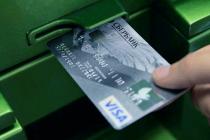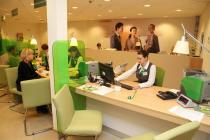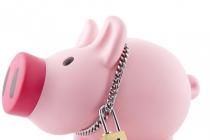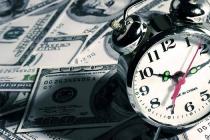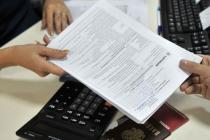The next current financial planning document is the annual cash flow plan. The need and importance of preparing this document is due to the fact that the concepts of “income” and “expenses” used in the “Income and Expenses” plan do not reflect real cash flows; these are indicators calculated “on paper” (accrual method). In the DDS plan, cash receipts and write-offs are reflected taking into account receivables payment schedules. The DDS plan is a plan for the movement of funds in the current account and at the cash desk of an enterprise and its structural unit, reflecting all projected receipts and withdrawals of funds as a result of the financial and economic activities of the enterprise.
It takes into account cash inflows and outflows in three areas of the enterprise’s activities:
Operational and production activities;
Investment activities;
Financial activities.
Operating activities are associated with the production and sale of products, works, and services. The main cash inflow from current activities is associated with cash sales transactions.
The main cash outflow items for production activities are:
Payment of bills from material suppliers;
Payment of wages;
Taxes, fees;
Other running expenses.
The difference between cash inflows and cash outflows determines net cash flow from operating activities.
The investment activity of the enterprise is associated with the purchase and sale of fixed assets and intangible assets, the acquisition and sale of long-term financial instruments of the investment portfolio. Consequently, asset transactions result in cash inflows and outflows. Comparison of inflows and outflows of money determines the final result of the investment activity of the enterprise.
Cash flows from financial activities are associated with attracting additional or share capital, obtaining loans and borrowings, paying dividends, and repaying debts.
Analysis of cash in these three areas allows us to identify the effectiveness of management of the production, investment, and financial aspects of the enterprise’s activities.
The DDS plan in expanded form is drawn up by analogy with Form No. 4 of the financial statements. At the same time, in relation to business practice, most indicators are difficult to predict with sufficient accuracy. Cash forecasting is often reduced to determining only the main components of cash flow.
At the same time, in relation to business practice, most indicators are difficult to predict with sufficient accuracy. Cash forecasting is often reduced to determining only the main components of cash flow.
Table 9. Cash flow plan
|
Index |
Planned values by quarter |
In just a year |
||||||
|
Cash receipts, total | ||||||||
|
including: | ||||||||
|
From sales of products, works, for cash | ||||||||
|
For previously shipped products | ||||||||
|
Getting a loan | ||||||||
|
Balance of other income | ||||||||
|
Increase in current liabilities | ||||||||
|
Cash payments, total: | ||||||||
|
including: | ||||||||
|
Payment of operating expenses in cash | ||||||||
|
Loan repayment | ||||||||
|
Payment of interest on a loan | ||||||||
|
Income tax payable | ||||||||
|
Purchase of fixed assets | ||||||||
|
Balance of other expenses | ||||||||
|
Increase in current assets | ||||||||
|
Net cash flow | ||||||||
|
Net cash flow on an accrual basis | ||||||||
This table is filled in based on previously made calculations. Receipts of funds from the sale of products for previously shipped products are transferred from table 5. The balance of other income and expenses are the initial data and are entered from table 7. The increase in current liabilities and assets will be calculated below in table 12. Cash payments will be calculated below in table 9 The data on payment of interest on the loan is transferred from table 6. Income tax is also calculated in table 6. Net cash flow is the difference between the receipt of funds and their expenditure.
Table 10. Payment schedule to creditors
|
Index | ||||||
|
Liabilities, total | ||||||
|
Payments per quarter | ||||||
|
Repayment of accounts payable | ||||||
|
Accounts payable at the end of the planning period | ||||||
Payments to creditors will be made in tabular form using Excel tables. The calculation procedure is presented in Table 10.
Table 11. Schedule of payments to creditors
|
Index |
Planned values by quarter, units |
||||
|
Liabilities, total (OR) (clause 6 of table 3 + clause 4 of table 4) | |||||
|
Payments per quarter | |||||
|
Repayment of accounts payable | |||||
|
Accounts payable at the beginning of the planning period | |||||
|
Accounts payable at the end of the planning period (clause 1 – clause 2 – clause 3 + clause 4) | |||||
When planning cash flows for operating activities, the influence of such indicators as “Increase in current assets” and “Increase in current liabilities” is taken into account. The need to calculate indicators for the growth of current assets and current liabilities in financial planning is due to the fact that when developing a DDS plan, these indicators are considered, respectively, as the expenditure of funds to create stocks of raw materials and materials in connection with the volume of product sales and as additional sources of financial resources in the form of accounts payable (indicators 2.8 and 1.5 of Table 9). To calculate the increase in current assets and the increase in current liabilities, it is fashionable to proceed from the turnover indicators of current assets and current liabilities that fell on the enterprise in the previous period or are assumed from the conditions for optimizing turnover indicators in the future period.
In the course work, indicators are set conditionally in accordance with formulas 1 and 2:
Formula 1
K obTA – turnover ratio of current assets for the quarter;
TA np, TA kp – the value of current assets at the beginning and end of the period, respectively.
Formula 2
To obTP – turnover ratio of current liabilities for the quarter;
B-revenue from sales for the quarter;
TP np, TP kp – the value of current liabilities at the beginning and end of the period, respectively.
Knowing the turnover ratio and the planned volume of product sales and having information about the initial value of current assets (liabilities), you can determine the value of current assets (liabilities) at the end of the period.
Formula 3
The increase in current assets on a quarterly basis is defined as the difference between the values of current assets at the beginning and end of the planned quarter. The increase in current liabilities by quarter of the planned year is also calculated.
We summarize the calculation results in Table 12 and use them in drawing up the DDS plan and the planned balance sheet.
Table 12. Increase in current assets and liabilities
|
Index |
Previous period | |||||
|
Revenues from sales | ||||||
|
Current assets | ||||||
|
Current liabilities | ||||||
|
Increase in current assets | ||||||
|
Increase in current liabilities | ||||||
|
Current asset turnover ratio | ||||||
|
Current liabilities turnover ratio |
When planning cash flows, it is necessary to ensure a condition according to which the balance of cash receipts and payments should not be negative. In the course work, this indicator is the “Net Cash Flow” indicator, paragraph 3 of Table 8.
In your course work, provide examples of management decisions for two situations:
According to the results of DDS planning, the final balance is negative. What measures can be taken to increase cash flow?
Based on the results of planning of receipts and payments, there is a surplus of funds. How can you manage your company's temporarily free funds?
Cash shortages negatively affect the solvency of the enterprise. The first thing you should pay attention to when deciding how to eliminate the budget deficit of any enterprise is improving the management of accounts payable and receivable. Accounts receivable management includes accelerating turnover and reducing the growth rate of accounts receivable. Accelerating accounts receivable means reducing the overall requirement for current assets.
Accounts payable management is aimed at accelerating its turnover - reducing repayment periods.
Discounts on the price of goods provided by the supplier to the buyer upon earlier payment allow the manufacturer to free up funds for a new production cycle or invest them profitably before the start of a new production cycle.
From the point of view of cash flow, managing the product range means optimizing it in order to increase sales volume.
It is possible to sell or lease property, which has a direct impact on the cash flow of the enterprise. It should be remembered that selling provides a one-time influx of cash, and renting provides a regular influx throughout the entire period.
Particular attention must be paid to the study of inventories. Often, enterprise specialists adhere to a policy in managing current assets of increasing the volume of material reserves in case of unforeseen circumstances, believing that this is the best way to invest funds to protect against inflation. But an increase in inventories leads to an outflow of funds and a decrease in the liquidity of the enterprise’s balance sheet.
Stimulating cash flow can be achieved using external financing of the enterprise through:
Trade credit
Bank loan
Factoring
Short term rental
Issues of shares.
Temporarily free funds arise in the enterprise due to:
Positive value of net working capital;
The excess of cash inflows over their outflows.
A significant excess of cash (more than 5% of the volume of current assets) indicates that the company is actually incurring losses associated with inflation, with lost profits from the profitable placement of funds. It is possible to invest free funds, but the important point is to decide on the advisability of a particular investment.
The article describes in detail an important stage in the procedure for obtaining a loan - building a cash flow forecast, describes what rules should be followed when communicating with credit analysts, and analyzes the basic principles of making a forecast. The article also examines in detail the construction of a cash flow forecast, indicating the key indicators that banking specialists pay special attention to. This material will help you avoid mistakes and increase your chances of loan approval.
Getting a loan- a pressing problem for almost any business. Money may be needed for various purposes: from closing a temporary shortage of funds to implementing investment projects. The process of obtaining a loan can often be quite lengthy and complicated. The bank needs to provide a lot of documents and answer a bunch of questions.
One of the most important stages of this procedure is analysis of the company's financial condition. A credit analyst evaluates the development of the borrowing company in past periods and at the present time, and also makes a forecast for the future. And it doesn’t matter whether you are going to borrow money for three months or ten years, a forecast for the loan period must be provided. After all, it is he who clearly shows how much the borrower plans to earn and spend, and most importantly, where he will find the money to pay the bank on time.
If you plan to attract not credit funds, but use leasing, then this topic will also be relevant. After all, leasing companies use approximately the same approaches when assessing clients and also want to see adequate development forecasts from them. In this case, of course, forecasts should provide for regular payment of leasing payments.
EARN THE ANALYST'S TRUST
First, I would like to dwell a little on how the interaction between the credit institution and the borrower occurs in the process of obtaining a loan. The bottom line is that your business values credit analyst. He directly or through the manager requests various information, which also includes a cash flow forecast. The borrower can provide him with a ready-made plan or budget, if any are drawn up by the company for its own purposes. It is also possible for the analyst to send some standard form developed by the bank (the form must be filled out). It may contain the following columns, broken down into planned periods:
- sales;
- cost price;
- attachments;
- loans, etc.
The form may look like that shown in table. 1 (only there will be many more fields to fill out).
| Table 1. Example of a cash flow forecast form | |||
| Index | Year | ||
| 2013 | 2014 | 2015 | |
| Operating income | |||
| Operating expenses | |||
| Interest repayment | |||
| Acquisition of fixed assets | |||
| Issue of shares | |||
You fill out the table. 1 with the necessary data, and the analyst, based on them, makes a forecast in the form accepted in his bank. Before doing this, he will probably ask the question: “On what basis do you plan certain indicators?” It is very important to be able to competently answer questions of this kind. The analyst’s confidence in your company depends on this. His task is to convey this confidence to the members of the credit committee, who will review your loan application and decide whether to give you money or not, at what interest rate. Therefore, it is best when the borrower himself provides the bank with a ready-made forecast and can clearly explain on what the planned indicators are based. Analysts love and trust such clients, which significantly increases the chances of receiving a loan.
WHAT FORECAST DOES A BANK NEED?
What is a forecast and what should it be? The main forms of financial statements, which, as a rule, become the object of analysis, are balance And Profits and Losses Report. Also in some cases it is considered company management reporting. However, no less (and perhaps more) attention deserves cash flow statement, revealing the sources of the company's money and the directions in which it is spent. Therefore, forecasts are made based on these reports.
When constructing a forecast, options for its preparation are possible. You can plan sales volumes (expenses) and thus generate a profit and loss statement for future periods, and then supplement it with a balance sheet forecast. To do this, it is necessary to imagine how the assets of the enterprise, as well as capital and liabilities, will change.
However, this data can be combined into a cash flow plan, which will combine not only the amounts of income, costs, but also investments, attraction and repayment of loans, dividend payments, etc. Such a forecast is easier both in preparation and in perception as a source of information for those who will evaluate the financial capabilities of your business (we will consider its construction in detail below).
RULES FOR MAKING A CORRECT FORECAST
Before making a forecast, it is necessary to understand several basic principles that it must comply with. They are quite simple and logical, but borrowers sometimes make mistakes, which then result in the bank refusing to provide a loan. If you already have a financial plan or budget in place and you are going to send it to an analyst, then make sure that your plan complies with main rules, meeting the requirements of banks:
- Show that you are doing well. Currently, there is an opinion that if a company applies for credit money or submits an application to a leasing company, this means that it does not have enough money or does not have it at all (but in the future it will definitely appear).
If we talk about a loan, then this will be true: hardly anyone asks for money if they have a lot of their own. However, it may be that someone has enough of their own money, but they want more, because tomorrow they can make twice as much from it.
Taking out a loan is often more profitable than saving the required amount for a long time. After all, over time, our savings can significantly fall in value due to the same inflation.
There is nothing to say about leasing at all, since in addition to the advantages of a loan product, it also has advantages associated with reducing taxes payable. Therefore, the forecast should show the best possible financial position of your company. There should be no shadow of a doubt that you will not be able to pay off your obligations, both to the bank and to other creditors. A financial plan should show that you have enough money to pay off your debts.
- When showing a favorable state of affairs, one should not forget that the forecast must be realistic. That is, when planning a certain amount of sales, you must be quite sure that you can achieve this indicator. You shouldn’t draw sky-high numbers, but take your expected results and reduce them by 10% (it’s better to start from a pessimistic scenario). At the same time, according to the forecast, you should still have enough resources to pay off all obligations on time. And if it turns out that, according to the plan, taking into account adjustments for reality, there suddenly is not enough money to pay the loan, then you should think about whether it’s worth borrowing money at all.
- In a cash flow forecast, the values of all indicators should be based on objective factors (the third rule is a consequence of the second). That is, if an analyst asks you to clarify this or that value in your plan, you should always be able to give it an adequate explanation. This will help gain the analyst's trust in you and your company, which can play a decisive role in the bank's lending decision.
For example, if you plan to increase sales by 10% next year, you must be able to correctly explain it. The explanation could be an annual increase in prices by 10% (even though the quantitative volume remains unchanged, which also needs to be justified) or an increase in production volume due to the commissioning of new equipment, etc.
CASE STUDY. DATA FOR BUILDING A FORECAST
When making a forecast, we will build it using the cash method (that is, we recognize income/expenses at the time of receipt/outflow of funds from our account).
The structure of the cash flow statement (as well as the forecast) is as follows:
- cash flows from operating activities;
- cash flows from investing activities;
- cash flows from financing activities.
Let us assume that the activity of the enterprise is the provision of rental cars. The main indicators of the organization over the past two years are as follows (Table 2).
| Table 2. Initial data for constructing the forecast, thousand rubles. | ||
| Index | Year | |
| 2012 | 2011 | |
| Number of cars, pcs. | 10 | 8 |
| Cost of cars (including wear and tear) | 3650 | 3400 |
| Credits/loans | - | - |
| Rental revenue | 3600 | 2800 |
| Expenses, including: | 3350 | 2860 |
| office rental | 400 | 360 |
| salary (3 people) | 1800 | 1600 |
| car insurance | 400 | 350 |
| repair and service | 250 | 200 |
| other expenses, including transport tax | 250 | 200 |
| Profit Loss | 500 | 90 |
Target- get a loan to buy five new cars. We will consider the cost of each car to be 500 thousand rubles, that is, we need 2.5 million rubles. We expect to return them within three years, so we will build an annual forecast for the period 2013–2015.
OPERATIONAL PERFORMANCE PLANNING
INCOME
When drawing up a cash flow plan, we rely on experience (historical data). When planning your income, you need to have an idea of how much you can earn per year by renting one car.
On average, one car brought the following income: 30 thousand rubles. per month (3600 / 12 / 10) in 2012 and 29 thousand rubles. in 2011 (2800 / 12 / 8). So the value is 30 thousand rubles. per month can be used as a baseline.
Demand is growing (this needs to be justified), our research shows this (otherwise why would we need to buy new cars). Therefore, we can now afford to increase prices by 10% with confidence that volumes will not decrease. Thus, subject to obtaining a loan and purchasing cars by the beginning of 2013, we can predict the amount of income equal to 5940 thousand rubles. (15 × 30 × (1 + 10%) × 12).
In addition, do not forget about inflation (here you should rely on your experience). In some areas prices are rising rapidly, while in others they remain the same or decline. In our case, we will increase rental rates by 10% annually.
According to the second rule, we will rely on a pessimistic forecast, so now we will take the obtained revenue figures and reduce them by 10%. This way we will provide ourselves (and in the eyes of bankers) with additional insurance against possible risks. In table 3 we will show how the income forecast will develop and its calculation.
EXPENSES
To plan future expenses, you need to have an analysis of historical data. In this case, the costs were represented by the following items:
1) office rental;
2) wage;
3) car insurance;
4) repair and service;
5) other expenses.
Points 1, 2 generally depend on the number of employees, of which until now there were 3 people, and points 3, 4 depend on the number of cars. Other expenses are often difficult to predict, but can be based on a link to revenue (transport tax depends on the number of cars).
OFFICE RENT
In order to continue effective operations, you need an office that can accommodate employees and is convenient for maintaining all cars and receiving clients. Further, according to the plan, it is necessary to increase the number of cars by one and a half times, which means an increase in the flow of customers. We will probably need an additional specialist to service them, so we will assume that from 2013 the company will employ 4 people.
It will also be necessary to expand office space. Therefore, we will conditionally assume that office rental costs will immediately increase by 40% and will increase by 11% per year due to an increase in rates on the part of the landlord, as happened in 2012. Calculation of office rental costs is presented in table. 4.
SALARY
Due to the fact that we will have a new employee, wage costs will increase (by about a third), and then it is planned to increase it by 15% (Table 5).
INSURANCE
Car insurance will depend on their value, which, suppose, is reduced annually by 15% of the original price (that is, 75 thousand rubles for each car, both new and previously purchased). Insurance costs in 2011 amounted to 10.3% of the value of cars at the end of the year, and in 2012 - 11%. We will start from this value when planning future expenses (Table 6).
REPAIR AND SERVICE
Repair and maintenance costs were 6% in previous periods and 7% in 2011-12. respectively. We assume that in 2013 they will remain at the same level, but due to the depreciation of cars for future periods it is necessary to factor in the forecast for an increase in repair costs of 20% per year. Calculation of car repair and maintenance costs is presented in table. 7.
OTHER EXPENSES
CASH FLOW FROM OPERATING ACTIVITIES
All income and expenses have been calculated, you can calculate the cash flow from operating activities (receipts are taken into account with a “+” sign, disposals with a “–” sign), which is presented in table. 9.
| Table 9. Cash flow from operating activities, thousand rubles. | |||
| Index | Year | ||
| 2013 | 2014 | 2015 | |
| Revenues (cash receipts from customers) | 5346 | 5881 | 6469 |
| Expenses (cash outflows), including: | –4239 | –4644 | –5129 |
| office rental | –560 | –622 | –690 |
| salary (4 people) | –2400 | –2760 | –3174 |
| car insurance | –553 | –429 | –305 |
| repair and service | –352 | –422 | –507 |
| other expenses | –374 | –412 | –453 |
| 1107 | 1236 | 1340 | |
INVESTMENT PLANNING
In our example, we had already made an investment forecast when we formulated the purpose of obtaining a loan. Now you need to purchase five new cars for 500 thousand rubles. each, the result is 2500 thousand rubles.
The topic of office expansion was previously touched upon, so it is also necessary to take into account the relatively small amount of funds for additional equipment and arrangement of space in the amount of 150 thousand rubles. from our own savings (we will incur these costs in 2013).
To simplify the calculation, we will assume that we can quickly purchase cars and set up an office at the very beginning of the year (this will not cause interruptions in the operation of the enterprise). Cash flow from investment activities is presented in table. 10.
FINANCIAL ACTIVITIES
Since we will be paying off the loan, it is necessary to pay interest (for example, at a rate of 15% per annum). The loan is issued from 01/01/2013 for a period until 12/31/2015.
Repayment of the principal debt depends both on our wishes and on the position of the bank. It is unlikely that he will allow us to repay the entire amount at the end of the term, however, it is better for us to gradually close our obligations in order to reduce interest payments. Therefore, we will draw up a graph of the dependence of cash flow on financial activity, according to which the loan will be repaid in equal parts at the end of each year (Table 11).
| Table 11. Cash flow from financial activities, thousand rubles. | |||
| Index | Year | ||
| 2013 | 2014 | 2015 | |
| Loan amount, thousand rubles. | 2500 | 1667 | 833 |
| Getting a loan | 2500 | - | - |
| Interest repayment | –375 | –250 | –125 |
| Repayment of principal | –833 | –833 | –833 |
| 1292 | –1083 | –958 | |
Please note that in this section we indicate not only loan payments, but also the receipt of funds received from the bank.
WE COLLECT CASH FLOW FORECAST
When all the indicators are calculated, you can assemble the cash flow forecast into a single whole, draw conclusions based on the forecast, and also determine what can (and should) be corrected in it.
At the same time, you should not forget to take into account the cash balance at the beginning and end of each period in the forecast (if our company has been operating for two years, then there are probably some funds available).
Let's assume that we have accumulated all the profits from previous periods in the account. Thus, we have accumulated 590 thousand rubles, which will be put into circulation.
Taking into account everything described above, the cash flow forecast will look as follows (Table 12).
| Table 12. Cash flow forecast, thousand rubles. | ||||
| No. | Index | Year | ||
| 2013 | 2014 | 2015 | ||
| 1 | Income (receipt of DS from clients) | 5346 | 5881 | 6469 |
| 2 | Expenses (disposal of DS), including: | –4239 | –4644 | –5129 |
| 3 | office rental | –560 | –622 | –690 |
| 4 | salary (4 people) | –2400 | –2760 | –3174 |
| 5 | car insurance | –553 | –429 | –305 |
| 6 | repair and service | –352 | –422 | –507 |
| 7 | other expenses | –374 | –412 | –453 |
| 8 | Cash flow from operating activities | 1107 | 1236 | 1340 |
| 9 | Buying cars (5 pcs.) | –2500 | - | - |
| 10 | Office arrangement | –150 | - | - |
| 11 | Cash flow from investing activities | –2650 | 0 | 0 |
| 12 | Free Cash Flow | –1543 | 1236 | 1340 |
| 13 | Getting a loan | 2500 | - | - |
| 14 | Interest repayment | –375 | –250 | –125 |
| 15 | Repayment of principal | –833 | –833 | –833 |
| 16 | Cash flow from financing activities | 1292 | –1083 | –958 |
| 17 | Net (total) cash flow | –251 | 153 | 382 |
| 18 | DS balance at the beginning of the period | 590 | 339 | 492 |
| 19 | DS balance at the end of the period | 339 | 492 | 874 |
From the table 12 shows that the cash flow forecast turned out to be quite good from the point of view of assessing banking risks (that is, the company will have enough money to cover all expenses and loan payments).
Thus, when the forecast is built, it is necessary to analyze the main nuances that you should pay attention to.
WE ASSESS THE CASH FLOW FORECAST
The first thing that may catch your eye is the negative total cash flow(Table 12, p. 17) in 2013. This means that during this period we will spend more money than we receive (an alarming factor for the analyst). However, we are saved by significant amount of savings(Table 12, p. 18), which is a kind of airbag. Throughout the entire planning period, it creates a significant reserve in case of unforeseen losses, but if the initial balance were equal to zero, then it would be necessary to take measures to ensure that the net cash flow was positive. After all, otherwise by the end of 2013 we would not have had enough funds to make a payment to the bank in full or we would have had to delay employees’ wages.
Solutions that would help avoid negative net cash flow include a slight change in the loan payment schedule. Let's say we could pay out not 833 thousand rubles in the first year. principal debt, and 700 thousand rubles. The difference would be carried over to subsequent years when cash flows increase.
In addition, you can consider options cost optimization or even additional short-term loan to close the temporary shortage of funds.
Note. Do not forget that we underestimated the expected income by 10%, but it is better not to count on them, but to rely on pessimistic indicators.
The second most important indicator is free cash flow (Table 12, page 12), equal to the sum of cash flows from operating and investing activities. Its value is often negative for projects at the investment stage, since large borrowed funds are spent. This also applies to our company. It is important that this indicator be positive in subsequent periods when debts need to be repaid.
Cash flow from operating activities(Table 12, p. 8) indicates whether the organization receives money directly from its business. If this indicator is negative, this means that the company may have problems, for example, with customer debts or sales of products, which entails financial difficulties.
FINANCIAL RATIOS. WHAT SHOULD THEY BE?
From the cash flow statement and forecast, you can calculate several simple but important ratios. In order to obtain a loan, two indicators will bring us the greatest benefit:
- debt service ratio;
- interest coverage ratio.
Debt service ratio(Debt Service Coverage Ratio, DSCR) is calculated as the ratio of free cash flow to total loan payments for the period (Principal + Interest), provided that no new loans were attracted (in which case the indicator becomes meaningless). When calculating, you can add to the numerator the cash balance at the beginning of the period, since it often happens that companies accumulate funds and then spend them within a short period.
Interest coverage ratio(Interest Service Coverage Ratio, ISCR) is calculated similarly, but only percentages are taken into account in the denominator. It is most relevant when, in the period under evaluation, the company does not repay the principal debt, but only pays interest.
The calculation of coefficients for our example is presented in table. 13.
| Table 13. Calculation of debt service and interest ratios, thousand rubles. | ||||
| No. | Index | Year | ||
| 2013 | 2014 | 2015 | ||
| 1 | Free Cash Flow | –1543 | 1236 | 1340 |
| 2 | Getting a loan | 2500 | - | - |
| 3 | Interest repayment | –375 | –250 | –125 |
| 4 | Repayment of principal | –833 | –833 | –833 |
| 5 | DS balance at the beginning of the period | 590 | 339 | 492 |
| 6 | Debt service ratio ( DSCR = 1 / – (3 + 4))* | not applicable | 1,14 | 1,40 |
| 7 | Debt service ratio (including initial balance) ( DSCR = (1 + 5) / – (3 + 4)) | not applicable | 1,45 | 1,91 |
| 8 | Interest coverage ratio ( ISCR = 1 / (–3)) | not applicable | 4,95 | 10,72 |
* Calculation formulas with line numbers are indicated in brackets.
In 2013 free cash flow will be negative due to investment. We will cover it with borrowed funds, so calculating debt service and interest indicators is not practical. Or it can be produced by taking as the numerator cash flow from operating activities. Then, without taking into account the initial balance, it will be equal to 0.91 (this indicates a negative net cash flow in 2013), and taking into account the balance, the indicator will be 1.4 (this confirms that, thanks to savings, the company still has enough money).
The meaning of these coefficients should not be less than 1, otherwise it will indicate a lack of funds to pay off obligations. However, banks, as a rule, insure themselves and consider them as the minimum acceptable value 1,1–1,5 for the indicator debt service And 1,5–2,5 for the indicator interest coverage. This creates a margin of safety for the enterprise when evaluating it. It is often justified in case of fluctuations in market demand, rising costs, changes in exchange rates, etc. Having similar values of these coefficients, the company shows that it has sufficient stability, is able to service its obligations and is ready for negative situations in the market.
Therefore, it is necessary to try to ensure that when constructing a forecast, these indicators are at a level not lower than the specified values (the higher, the better).
CONCLUSION
This article examined the construction of a cash flow forecast for the purpose of obtaining a loan (a task that almost all business managers face when applying to credit organizations). It is very important to show that you have the information and clearly know where your company is heading. By providing detailed and informed answers to the bank analyst's questions, you will be able to gain his trust, which will help in loan approval and may affect the interest rate.
When constructing a cash flow forecast, one should be guided by the fact that the analyst must see the stable financial position of the borrowing company. At the same time, you need to realistically assess your prospects and be able to justify all planned indicators.
When starting to calculate them, rely on historical data and a realistic assessment of the development of the market and your enterprise in it. Correctly calculate cash flows from operating, investing and financing activities, as well as the required ratios. And do not forget to include in the forecast a certain margin of safety for your enterprise in case of unforeseen situations.
Perhaps the forecast presented in this article will seem primitive to you. But believe me, in most cases, credit analysts do not even receive this information from potential borrowers. If you provide them with a similar cash flow plan and add adequate justification for all indicators, then the chances of getting a loan will increase significantly.
A. A. Zakharov, senior analyst
The main task of management is to achieve a positive result in the form of profit and fulfill all financial obligations. Profitability and solvency are the main two criteria that characterize the efficiency of a company. Financial management uses special tools that help manage business activities and cash flows.
The goal of managing money resources is to prevent deficits or surpluses. Excess free money is a company's lost profit, and a deficit is an indicator of insolvency. A cash flow budget is an effective financial management tool that allows you to rationally manage a company's cash resources. When properly planned, BDDS, compilation, control, analysis and adjustment of BDDS are needed for effective flow management. Every organization has certain regulations, practices and procedures, and plans are drawn up in accordance with them. Good information systems allow this process to be made as correct as possible.
The cash flow budget is a plan that includes several sections that reflect all sources of income and areas of use of funds for main activities. It allows you to rationally manage the company’s cash flow, ensure financing of all business operations, and fulfill obligations to suppliers, creditors, and the state. With the help of the Cash Flow Budget, the sufficiency of own funds for conducting business activities can be analyzed and the amount of required external financing can be determined.
Example of formation of BDDS
The principles for forming the BDDS depend on the accounting policies of the enterprise. When compiling a BDDS, direct or indirect BDDS methods can be used. The first approach is the most common; it displays the movement of funds in accordance with the types of activities:
- operating room;
- financial;
- investment
The main indicator of solvency at an enterprise is the amount of net cash flow.
The cash flow budget form is similar in structure to a similar report in financial statements under RAS; it can be used as an example of a budget.
Cash flow example
The “WA: Financier” system, developed on the basis of “1C: Enterprise 8.3”, allows you to create a correct BDDS, taking into account the provisions of the enterprise regulations. The BDDS report helps to obtain complete information necessary for analysis. The management of a company operating in Moscow or other regions of the Russian Federation has the opportunity to use it to assess the state of cash flows and distribute them correctly. Available for analysis:
- sources of funds;
- volumes of incoming cash flows;
- directions for using financial resources;
- the company's potential in terms of fulfilling obligations;
- the ability of the enterprise to ensure liquidity and solvency;
- sufficiency of funds for conducting business activities in the current period and forecasting the volume of cash flows in the future;
- opportunities to solve investment problems through internal sources;
- factors influencing the discrepancy between financial results and cash volumes.
The cash flow budget, prepared using the indirect method, is formed to determine the relationship between financial results and cash flows. This approach allows you to comprehensively assess the financial position of the company. This type of document may be included in reporting under IFRS. An example of the BDDS “WA: Financier”, generated using the indirect method, clearly demonstrates the information capabilities of the system. The system also allows you to create a sample state budget.
An example of compiling a BDDS Excel
Preparing and drawing up a cash flow budget is a complex process based on certain rules. The “WA: Financier” system uses a classic scheme (budget example). The planning process begins with the development of internal regulations:

- submission of payment plans from the Central Federal District to the financial department of the enterprise;
- preparing a draft budget;
- approvals;
- control over budget execution.
Solution "WA: Financier" for BDDS
“WA: Financier” is a program for BDDS that has been successfully implemented and used at enterprises in Moscow and other regions of Russia since 2007. It implements a complete model that allows you to effectively manage the company's cash flow. The consolidated cash flow budget is formed on the basis of the plans of individual central financial districts. The system is an example of effective solutions in the field of process automation.
The system has a convenient approval mechanism that allows you to control the process and approve plans at each stage. Execution is provided by subsystems:

- operational planning,
- reflection of the actual use of funds,
- generating reports.
The “WA: Financier” solution has extensive software functionality that allows you to:
- organize a convenient and high-quality cash flow management process,
- manage the system for generating and approving applications,
- promptly generate a “Payment Calendar” and make payments in accordance with it;
- correctly prepare banking and cash documents, flexibly interact with accounting systems and the client bank,
- configure output printing forms.
The “WA: Financier” system allows you to automate the process of managing monetary resources and improve its quality. It is a flexible tool, customizable to any tasks of enterprises in Moscow or other regions of the Russian Federation, regardless of the specifics and scale of their activities. Combines a proven methodology and a modern software tool.
Convenient and effective budgeting using BIT.FINANCE
The cash flow budget (CFB) provides information about the financial flow (income and expenses) of the organization in terms of its areas of activity. It is compiled for different periods and with different frequency, but basically the budget is planned and formed monthly for the year.
Its creation is based on the complete financial turnover of the company. Thanks to this, you can plan and analyze the receipt and expenditure of money and manage financing while eliminating cash gaps. An example of a cash gap is a violation in the sequence of cycles (receipt of advances and final payment) planned for a certain time. Then it is necessary to replenish funds with the help of additional capital or surplus in other items. Effective cash cycle management is possible through proper planning.
Goals and objectives of cash flow budget planning
The purpose of creating a cash flow budget is to plan the required amount of cash in order to identify cases when the organization expects a deficit or surplus. This is what helps to avoid cash gaps and subsequent crises.
For a company operating in public markets, the main thing is continuous planning to ensure core activities, coverage of liabilities and social protection of employees.
It is also being developed for company cash management. This involves searching for sources of income and spending purposes, searching for reasons for the lack or excess of funds. Such a budget should fully answer the following questions: Should the company take out a loan? When exactly should you take it? How to prioritize calculations? What are the reasons why a company with a profit does not have free cash? Unlike the other two master budgets - “income and expenses” and “budget balance”, the cash flow budget does not directly depend on the accounting policy of the organization. It is not difficult to form it, which is why many Russian companies complete their budgeting only by forming it.
Methods for planning BDDS and its composition
From an organizational point of view, there are at least two approaches to planning BDDS. These are “bottom-up” and “top-down”.
The “bottom-up” approach assumes that all FRCs (financial responsibility centers) form it only for their department. Next, information is collected for each central financial district, and a combined version is obtained for the entire organization. The main advantage of this approach is that the data is close to reality, because the budget is planned locally. But, no matter how strange it may be, the main disadvantage of this approach is considered to be an artificial decrease in income or an increase in expenses, depending on what is beneficial to the managers of the Central Federal District.
With the “top-down” approach, the opposite is true; at the level of the management company, a consolidated BDDS is planned across divisions, and then sent down to the divisions for execution. The main advantage of the approach is the compliance of the budget with the overall strategy and goals of the enterprise, and the disadvantages are the lack of motivation for heads of local departments, and high labor costs for drawing up a budget close to reality, because market research is necessary.
There is also a third combined approach “up and down (down-up)”. It’s not difficult to guess from the name that this is a combination of the two approaches described above. That is, first, the heads of the Central Federal District form the BDDS of their divisions and transfer them to the management company, it forms a consolidated version for the entire company, then adjusts it in accordance with the goals and overall strategy, the final version is obtained, and it is already “moved down” to the final divisions, and how As a rule, this option differs from the one that the divisions initially submitted to the management company. This approach combines all the main advantages and eliminates the disadvantages of previous approaches, but it has one big disadvantage: it takes a significant amount of time to compile.
BDDS consists of 100–300 articles, divided into areas of activity: operational, financial, investment. Articles should reflect the specifics of the business in both expenditure and revenue.
Sources for creation:
- Actual data of the previous period, multiplied by a coefficient
- Planned cash flow schedules for already concluded contracts
- Collecting needs from administrative departments
- Planned indicators of income and expenses for the same period
The data sources can also use various market studies from which the growth rate for the company can be determined.
The most popular source is information from the budget of income and expenses. Its dependence on the items of income and expenses (I&E) is obvious, therefore another way to form the I&E is its calculation through the planned I&E and standard settlement conditions. The Central Federal District is responsible for their compliance. When using this method, one should take into account not only the expenses of the period under review, but also the repayment of accounts payable for previous periods, and advance payments that may become expenses in future reporting periods.
As preparation for carrying out such calculations, the reference book identifies and records monetary and non-monetary items of the BDR according to the principles:
- planned expenses on monetary items must be financed in the same or in the nearest periods (months);
- non-cash expenses arise from previously financing a project or purchasing inventory, which are then expensed.
For VAT payer organizations, in addition to the mentioned characteristics for all items of the BDR, it is necessary to take into account whether VAT will be transferred upon payment to the counterparty or not.
Formation of BDDS in BIT.FINANCE
The BIT.FINANCE program allows you to automate the process of generating BDDS. The system provides a directory for storing turnover items:
It is also possible to specify other budget structures based on turnover items using the “Budgets” directory.

To plan BDDS in the aspect of the Central Federal District, it is possible to indicate the financial structure of the company in the directory “Central Federal District”.

To enter planning information, use the document “Budget Entry Form”. In this document, you can enter data manually in a convenient form or fill it out based on any calculation algorithms - modified data from previous years, contract schedules, downloading from Excel, based on BDR data and any calculations written using queries. Data in one cell can be divided into several rows of the tabular section, which allows you to plan across multiple analytics at once.

After filling out the “Budget Entry Form” document, it must be sent for approval.

The approval tab consists of two parts. On the left is a list of approvers, and on the right is the approval route itself. Coordination routes are easily configured in enterprise mode, without programming. To agree, you need to click on the desired diagram object on the right side, or indicate the solution in the tabular part on the left.

You can add a comment for each visa.


The history of visa installation can be viewed on the history tab (comments will be displayed here, if any), and you can also write a message for any visa.

Another way to install visas is to process the “Visualization Workplace”. In processing, you can generate a list of visas available for installation, perform selections, open the necessary documents for viewing, and perform a group installation of visas.

Since the BIT.FINANCE program has the ability to control requests for spending funds, after approval, control budget values are usually established. Fixation of limits is carried out by the document “Setting control values”, in which you can specify which budgeting sections to control applications for.

Factual data is collected automatically when posting payment documents in accounting. To write off funds, the analytics are taken from requests for spending funds, and in the event of cash receipts, it is possible to specify the values of the analytics manually or set up correspondences - between regulated accounting items and budget items, between divisions of the organization and the Central Federal District.

To analyze the compiled planning data, the system uses the “Budget Report” report. It displays data in various analytics sections and at any frequency.

The system also includes a “Plan-actual analysis of the budget” report, which allows you to compare planned and actual data.

The success of any enterprise, of course, ensures financial stability.
The financial stability and solvency of the company becomes independent from crises and unfavorable economic disruptions.
Such reliability helps to attract investment and, therefore, guarantees profit growth.
The construction of the BDDS is becoming a priority factor in managing the activities of enterprises.
The economic stability of a company is directly related to cash flow and careful management of this flow.
As is known, a financial manager is involved in cash flow analysis.
Definition of BDDS
To forecast cash flows, prevent cash gaps, and manage the profitability of an enterprise, a financier needs the most important tool - a cash flow budget.
BDDS is understood as a cash flow plan for the cash desk of a given organization (possibly a structural unit).
It reflects almost all projected financial receipts, as well as withdrawals from the company's business operations.
BDDS expresses all possible receipts of prepayment (for example, to a current account, to the cash register) for the supplied products.
The tool shows advance payments and also records delays in financing for previously provided products.
If it is found that the financial balance in the initial budget period is insufficient to cover expenses, then additional financial sources will need to be sought.
The construction of the BDDS is becoming a priority factor in managing the activities of enterprises. It is compiled at various intervals. The plan for the general budget period provides for monthly detailing.
The main thing to remember is that BDDS is a fairly flexible (that is, changeable) form.
Therefore, the most practical is a monthly plan, broken down by day. It is created and then approved monthly (at the end). Moreover, in its compilation, without a doubt, all divisions of the enterprise involved in planning and the process of spending finances participate.
Cash, having a high percentage of liquidity, gives the company freedom of choice in business activities.
Cash Flow Budget Planning
For the effective operation of an organization, as is known, a positive financial balance is necessary. Professional, competent BDDS planning will solve this problem.
It is not for nothing that BDDS occupies the most important place in the budgeting system.
As a rule, serious attention is paid to the study (forecast) of financial movements.
This occurs due to the irregularity of receipts (payments) during the operation of the enterprise, as a result of any unforeseen circumstances.
It is precisely because of a lack of money that a crisis situation often arises.
It is better to divide the procedure for compiling a BDDS into stages performed sequentially.
Stages of compiling a BDDS:
- For investment costs, the required level of funds is determined.
- Finance is needed to make capital investments, purchase fixed assets, and build your own facilities.
- Funds are generated, naturally, from profits remaining after taxation.
- The minimum financial balance for the day for unforeseen expenses is determined.
- The revenue side of the budget is determined. This includes the budget taking into account the coverage of accounts receivable, sales of fixed assets, interest received, and dividends.
- The expenditure part of the budget is determined.
Direct costs are taken into account here:
- labor costs;
- expenses for purchased materials, raw materials
- overheads;
- investment activities;
- financial transactions (repayment of loans, payment of interest, dividends).
Moreover, the cost of raw materials (materials) is fixed at standard prices, sometimes different from market prices.
Budgeting efficiency

The activity of an enterprise involves, as is known, making a profit.
What is important here is cash flow.
Its result leads to a new production cycle. This allows for the reallocation of limited resources.
BDDS has main parts:
income (from sources of funds) and expenses (use of these funds).
The information content of the BDDS is possible if it covers all cash flows. Forecasting cash flow becomes the most important task to ensure the productive activities of the company.
Budgeting efficiency is associated with the presence of end-to-end procedures and regulations at all stages.
Formation of BDDS
Experts begin developing a budget by identifying sources of possible cash receipts for a specific budget period.
Typically these sources are divided into categories:
- proceeds from operations,
- financial income from external sources,
- other income.
The specifics of the business certainly play an important role. Income reflects mainly the funds that are undoubtedly received in a particular budget period.
Sources of such income can be external or internal.
Loans and investments are considered external.
Two groups of internal revenues include operating income (from the provision of services) and non-operating income - a by-product of the company’s main activities.
- Specific operations of the company
- Capital investment
- Other expenses
The third item of expenses includes the following operations:
- payment of credit interest;
- coverage of loans, loans;
- issuance of dividends, settlements with investors;
- contributions to the state budget.
This planning process strengthens the strategic goals of the business.
The result of the formation of the BDDS can be positive, negative, balanced.
It is considered positive if the planned financial receipts exceed the planned expenses. As a result, naturally, a free residue is formed. If it is significant (5% of the total amount), then the excess is placed on a deposit (bank). Securities may also be purchased.
The result is considered balanced with a small free balance.
When the planned cash receipts do not cover the planned payments, the result is considered negative.
The situation can be changed. The following actions will be required:
- mandatory recalculation of budget indicators:
- change of payment policy,
- cost reduction;
- attraction of borrowed funds.
Thus, BDDS is a key tool in the company’s budgeting and management system.
Sample cash flow budget form:
| Budget item | ||||||||||
| Cash balance at the beginning of the period | ||||||||||
| Cash receipts | ||||||||||
| Income from core activities | ||||||||||
| Revenue from sales of products, including: | ||||||||||
| from sales of the current period | ||||||||||
| from sales of previous periods | ||||||||||
| Advances received from buyers and customers | ||||||||||
| Income from investment activities | ||||||||||
| Proceeds from the sale of fixed assets | ||||||||||
| Return on long-term investment | ||||||||||
| Other income from investment activities | ||||||||||
| Income from financial activities | ||||||||||
| Return on short-term investments | ||||||||||
| Obtaining short-term credits and loans | ||||||||||
| Placement of additional shares | ||||||||||
| Other supply | ||||||||||
| Payments of funds | ||||||||||
| Payments for core activities | ||||||||||
| procurement of materials | ||||||||||
| wage | ||||||||||
| Taxes | ||||||||||
| Income tax | ||||||||||
| VAT | ||||||||||
| Property tax | ||||||||||
| Payroll taxes | ||||||||||
| rent | ||||||||||
| office | ||||||||||
| stock | ||||||||||
| maintenance of buildings and structures | ||||||||||
| branch | ||||||||||
| electricity | ||||||||||
| travel expenses | ||||||||||
| commercial | ||||||||||
| AUZ | ||||||||||
| business trips for an investment project | ||||||||||
| fare | ||||||||||
| delivery by own transport | ||||||||||
| maintenance and repair | ||||||||||
| advertising and product promotion | ||||||||||
| marketing | ||||||||||
| maintenance and repair of production equipment | ||||||||||
| AUZ | ||||||||||
| office expenses | ||||||||||
| communication costs | ||||||||||
| Payment of interest on a loan | ||||||||||
| other payments | ||||||||||
| other company-wide | ||||||||||
| invoices | ||||||||||
| commercial | ||||||||||
| Payments for investment activities | ||||||||||
| Acquisition of fixed assets | ||||||||||
| Acquisition of intangible assets | ||||||||||
| Long-term financial investments | ||||||||||
| Other payments for investment activities | ||||||||||
| Payments from financial activities | ||||||||||
| Repayment of loans and borrowings | ||||||||||
| Short-term financial investments | ||||||||||
| Payment of dividends | ||||||||||
| Other payments | ||||||||||
| Financial flow | ||||||||||
| by core activity | ||||||||||
| on investment activities | ||||||||||
| on financial activities | ||||||||||
| Cash balance at the end of the period | ||||||||||
| financial flow without loans | ||||||||||
| initial balance of DS | ||||||||||
| need for financing | ||||||||||
| return of financing | ||||||||||
| balance of DS | ||||||||||
| cash balance standard | ||||||||||

